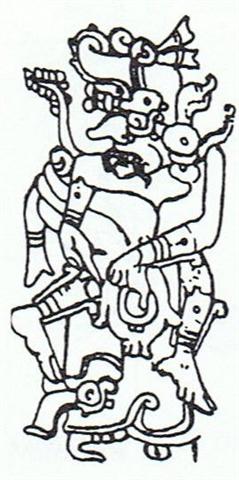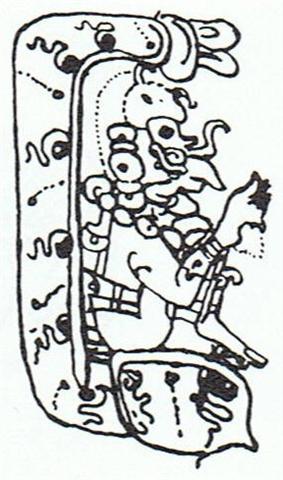2. Connected with the idea of a pastoral paradise is the complementary idea of the agricultural toil of a sedentary people. ... During his descent the ancestor still possessed the quality of a water spirit, and his body, though preserving its human appearance, owing to its being that of a regenerated man, was equipped with four flexible limbs like serpents after the pattern of the arms of the Great Nummo. The ground was rapidly approaching. The ancestor was still standing, his arms in front of him and the hammer and anvil hanging across his limbs. The shock of his final impact on the earth when he came to the end of the rainbow, scattered in a cloud of dust the animals, vegetables and men disposed on the steps. When calm was restored, the smith was still on the roof, standing erect facing towards the north, his tools still in the same position. But in the shock of landing the hammer and the anvil had broken his arms and legs at the level of elbows and knees, which he did not have before. He thus acquired the joints proper to the new human form, which was to spread over the earth and to devote itself to toil ... The Rain God series seems to indicate the shepherd season comes before midsummer and the season of the vegetational growth after - the hunger of winter will be dispersed by the birth of lambs and calves and later the greenery from the soil will grow plentiful:
Modern civilized people do not starve in winter, but thet have to wait for spring before they can play croquet on their lawns. The 'fields of earth' in the sky can be regarded as a pattern of alternating black and white squares (cfr at The Mad Hatter):
In the hedges between these tilled fields we can imagine there are hedgehogs. According to Ogotemmêli the number of squares in ancient times was based on 8: ... This chequer-board is pre-eminently the symbol of the 'things of this world' and especially of the structure and basic objects of human organization. It symbolizes: the pall which covers the dead, with its eight strips of black and white squares representing the multiplication of the eight of human families; the façade of the large house with its eighty niches, home of the ancestors; the cultivated fields, patterned like the pall; the villages with streets like seams, and more generally all regions inhabited, cleared or exploited by men. The chequer-board and the covering both portray the eight ancestors ... 8 * 8 = 64 is the number of days (glyphs) to add from the 'Woman in Chains' in order to reach the correct right ascension numbers for the stars of 'earth' as represented by the glyphs on the front side of the G text. The 'earth' begins with the black (Ethiopian) princess Andromeda chained at the very edge of the 'sea', and maybe 'earth' ends after another 8 * 24 days. 8 * (8 + 24) = 64 + 192 = 256:
|
|||||||||||||||||||||||||||||||||||||||










